WEBlog - discover interesting things about your employees.
All posts
Why You Need Work Performance Information and How to Get It
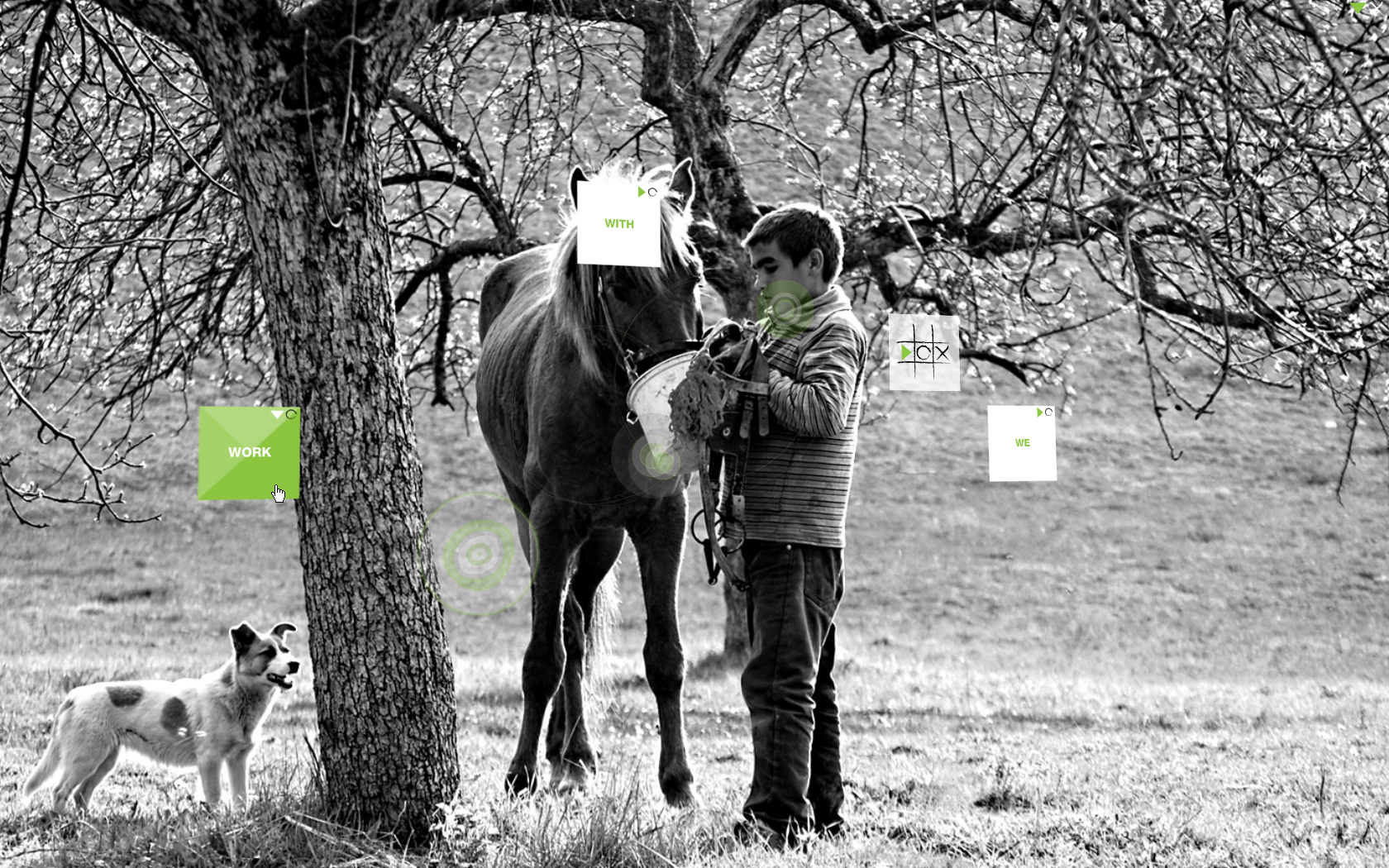
Information is one of the most valuable assets for a business nowadays, but it all doesn’t boil down to your competitors’ secrets. Some critical information is hidden in plain view, and you need only to embrace its importance and avail of the opportunities provided by modern software. Today we are going to dig into employee performance information and explain what you can get from it.
What Is Work Performance?
Work performance evaluates whether an employee copes with a job, task, or role assigned to them well enough to meet the employer’s expectations and the company’s goals. The online Simplicable encyclopedia breaks work performance into several types, covering a wide range of aspects to factor into the assessment:
- Work performance can be evaluated based on revenue obtained as the result of the employee’s efforts.
- Sticking to schedule and budget when fulfilling work-related duties is another point to consider.
- A level of customer satisfaction evaluated through feedback serves as a valuable indicator.
- The effectiveness of oral and written communication speaks of the employee’s ability to contribute to smooth workflows.
- Teamwork skills make an important part of employee performance, as counterproductive behaviors affect the overall team efficiency badly.
- Generating useful ideas that can be implemented to achieve corporate goals adds to the employee’s karma.
- If a role implies decision-making, the employer expects the employees to take corresponding responsibility and come up with clear and timely answers.
- Leadership cannot be overestimated when it comes to motivating people and directing them right to a target.
- Strategic vision and the ability to embrace changes often make the difference between a person who contributes to achieving corporate goals and a worker who lags behind.
- Doing the same amount of work in less time or with reduced costs is a sign of a more efficient staff member.
- If an employee anticipates risks and takes actions to prevent potential losses, this person is able to perform better than others.
- Productivity, which shows the amount of work (products, services, etc.) done by an employee within a given amount of time, is one of the key metrics in work performance.
- However, we also need to keep in mind the quality of delivered work instead of calculating the quantity only.
- Compliance with workforce ethics and applicable laws and regulations distinguish a diligent worker from a rogue employee.
As we can see, work performance can be assessed based on many factors. Some of them are linked to natural abilities (like creative thinking) and training (developing leadership skills), while others rely on a workplace environment (such as maintaining employee morale). Although an employer cannot change what is granted by Mother Nature, the business leader is surely able to provide required training and build a healthy work environment, which promotes an increase in job performance. It doesn't take a Sherlock Holmes to figure out the importance of work performance information for making just decisions towards these goals. But before we jump to why and how-to, let’s get it clear what work performance information is.
What Is Job Performance Information?
It all starts from collecting data. Often used as synonyms, information and data are not actually the same. When we gather data, we get raw facts that are not structured, analyzed, and connected with context. It is a collection of figures, images, observations, and other materials, which need to be processed to derive information.
Information is based on data, but it goes beyond simply collecting facts. You need to organize and interpret them in a meaningful way according to your purpose. Commonly stored in databases in computer-readable formats, data can be extracted and shaped into a piece of information delivered in a more human-friendly form as an answer to a certain question. For greater convenience and better perception, information is often presented via visualizations, reports, or dashboards.
Here is how it works in Work Examiner’s employee monitoring software. For example, Controlio collects screen records of each computer under its surveillance, taking pictures every five minutes of the users’ active time. All the images are securely stored in the system and can be easily accessed through the Snapshots section.
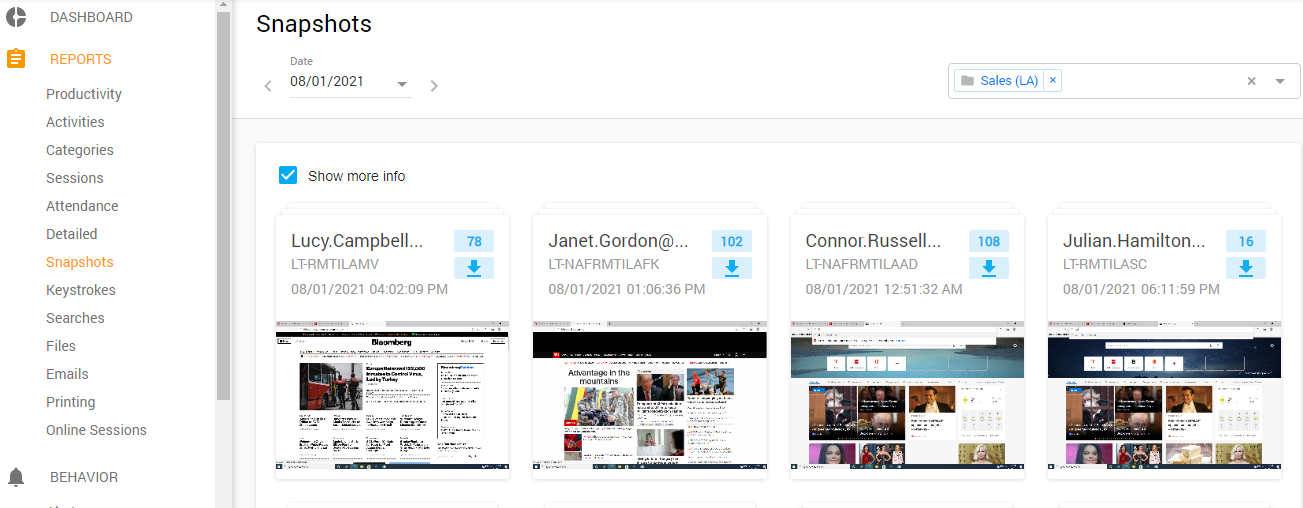
However, they all are raw data received by simply capturing the screens. Even though these records are categorized by time and user, they cannot provide you with information on who of your workers visit prohibited social media pages without further analysis and interpretation.
But let’s get a new angle on the opportunities provided by Controlio. You can go to the Summary section of the dashboard and see a nice visualization of the Top Violators report. It clearly shows staff members who earned the highest amount of alerts due to visiting YouTube and Facebook during working hours.
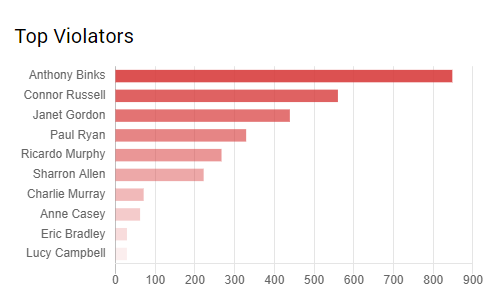
So, we have just seen how data collected by Controlio was processed and organized with a specific purpose in mind to morph into useful information you can leverage for making a reasoned decision.
To take it a step further, we should mention insights and knowledge, which also originate from data and information sourced from the data. When you analyze information and are able to draw conclusions that can contribute to decision-making, you arrive at insights. Proceeding with the above example, you may learn from the report that 7 out of 10 top violators work in your LA team, while the personnel of your London-based branch doesn’t get social media alerts at all. Here is your insight: the head of your LA unit fails to maintain workplace morale, and you need to address the issue ASAP.
However, you may need more information on the state of things in LA to make a correct organizational decision. Say, you go to Productivity Scores and find out that the LA team is much more productive than any other of your units.

You are surprised to know that somehow, visiting social networking sites doesn’t prevent them from doing their jobs. Well, maybe, they just work more efficiently than others? At this point, you would go back to screen records to see that, for instance, the social pages the LA staff visits most often are all related to boosting sales. Step by step, collecting work performance information, adding insights from other sources, and complementing them with your experience, you move to knowledge.
Now you clearly understand what decisions you need to make (for example, to implement additional training for the LA team to support their craving for professional development) and how employee performance information translates into actions. But it is only one of many scenarios where productivity analytics come in handy. It’s time to learn more about the goals you can achieve and the benefits you can get by collecting the necessary information.
Why Collect Work Performance Information?
While the importance of efficiency and productivity metrics deserves a separate article, let’s get straight to practical matters. Gathering work performance information allows:
- conducting management system analysis to ensure the optimal distribution of powers and tasks between team members;
- understanding whether a particular employee copes with the amount of tasks assigned for them and whether this amount is adequate to the pay they receive;
- determining whether a company needs to retain or open a particular position and whether the person who occupies it makes a significant personal contribution to the success of the business;
- finding motivation methods that work best to encourage greater productivity in a given team;
- assessing an employee's prospects to decide whether it is worth paying for advanced training for the person;
- revealing the effects of under-performing staff members on various business operations and benchmarks to timely fix the issues.
Surely, all those tasks listed have to be included in your performance management system, which, according to HR management expert Michael Armstrong, should be implemented on an ongoing basis and aimed at improving performance by setting individual and team goals aligned to the strategic goals of the company. He also insists that performance management should focus on developing the knowledge, skills, and abilities of people. By enhancing job performance, an employer gets multiple benefits:
- Increase in profits. When your employees are efficient, your operating costs decrease while the income goes up.
- Business growth. Effective employees perform their duties better and achieve their goals faster, increasing the success of the business as a whole.
- Improved working environment. Motivated employees who do their jobs efficiently create a positive environment to inspire the rest of the team and work as role models for new members.
- Reduced turnover. With a high level of employee engagement, it's easier to attract and retain talented people.
- Professional growth. When your employees strive for excellent performance, they push their limits and gain new skills that make your team more qualified and experienced.
Want some facts to see how these things are connected? Suppose you integrate Controlio’s productivity analytics into your performance management system to set clear and fair benchmarks for distributing incentives among best-performing employees.
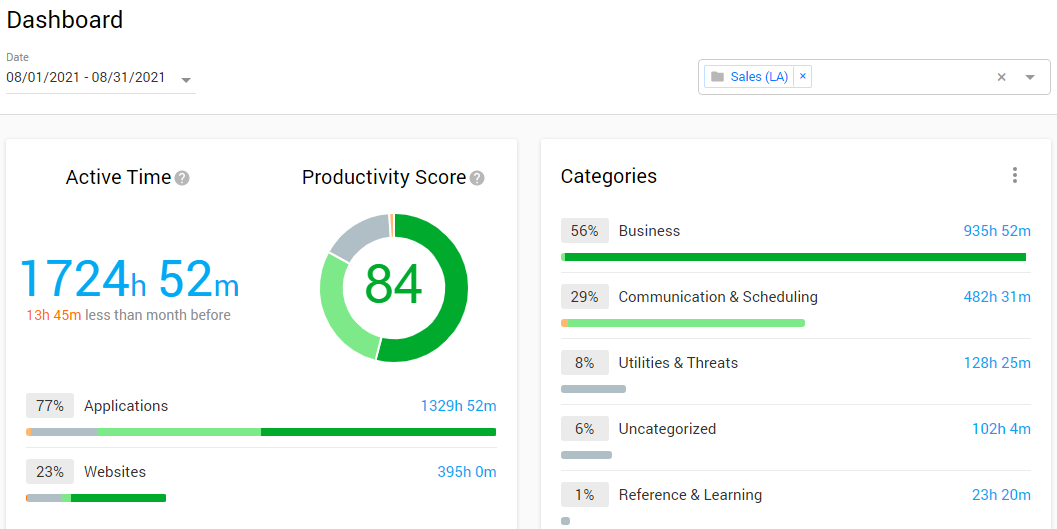
A survey conducted by SHRM/Globoforce proves that organizations that have strategic recognition programs in place enjoy a lower employee turnover rate and higher engagement levels. Another study shows that high employee engagement brings 26% higher revenue per employee, while low-engagement organizations are 22% less profitable than companies with highly engaged staff. Moreover, Northwestern University reports that employee engagement is directly related to customer satisfaction and enhanced profitability.
These statistics illustrate how various aspects of HR management are interconnected and impact a business and how actions inspired by work performance information can benefit a company. But for a start, we need to understand what useful vs. poor information is.
What Is Good Information?
There are several characteristics that define good information, but we will highlight the most important features:
Relevance
To avoid being overwhelmed with all kinds of data, you should explore information, having a clear goal in mind and focusing on a particular problem. For example, when you want to discover whether you should extend your subscription with an online service, you can inspect Controlio’s Activities section to learn if your staff really uses this tool and how it contributes to their productivity.
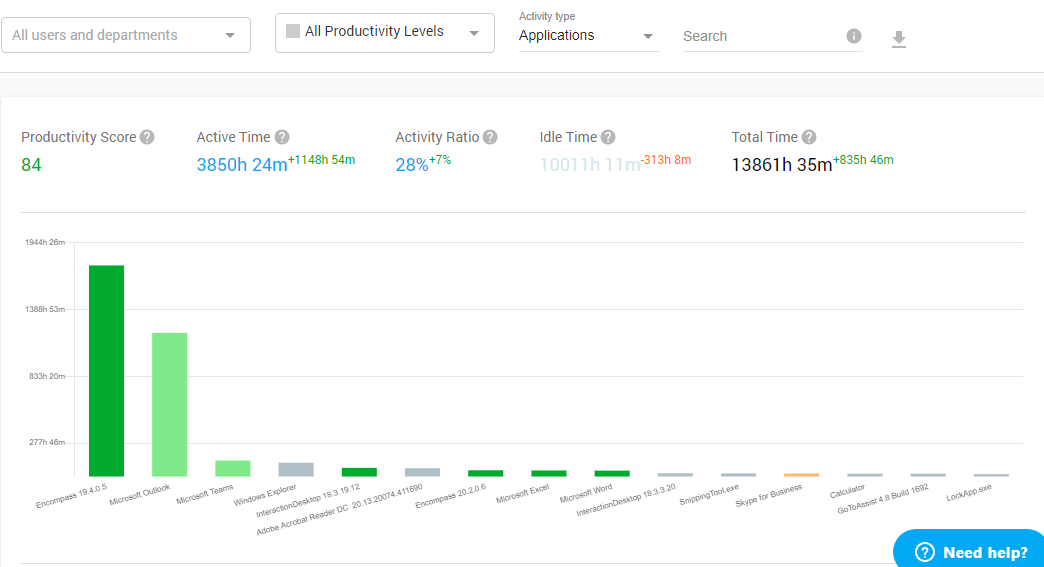
Yet, the information presented in this section would be irrelevant for calculating the cost-effectiveness of the app.
Accuracy
Inaccurate information results in wrong conclusions and bad decisions; so, you need to be sure it is error-free and not based on assumptions. Controlio accurately collects data and clearly explains what calculations are made to transforms the data into reports.
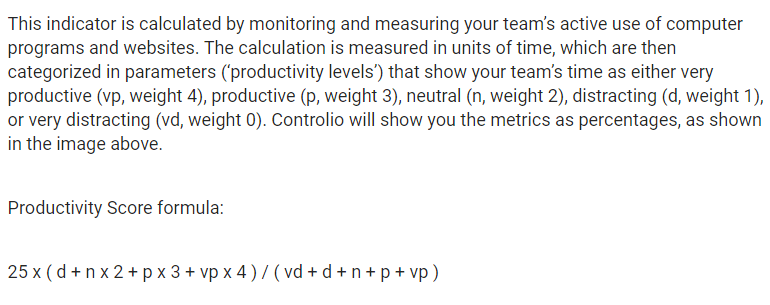
Timeliness
Information should be delivered right when you need it. It is especially true for security matters since delays, obviously, won’t help you prevent threats. To timely inform you about critical issues, Controlio delivers alerts on a number of activities like using removable storage devices or entering specific keywords.
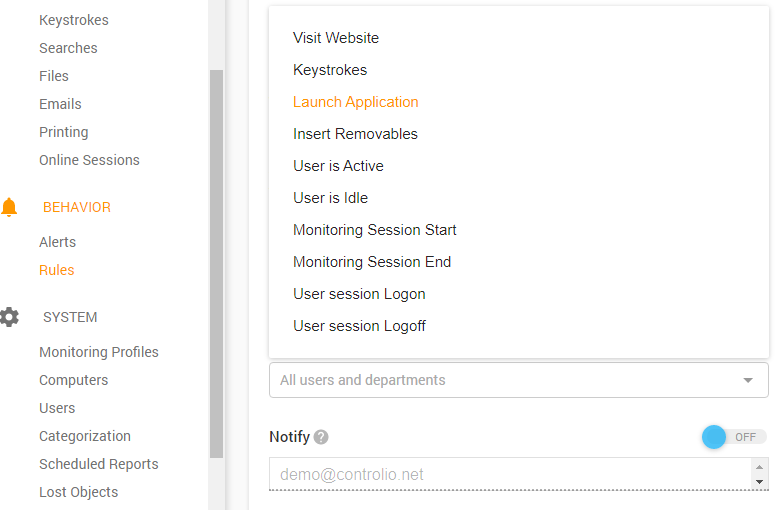
In addition, it gives you access to your staff’s online sessions, showing the data in real time.
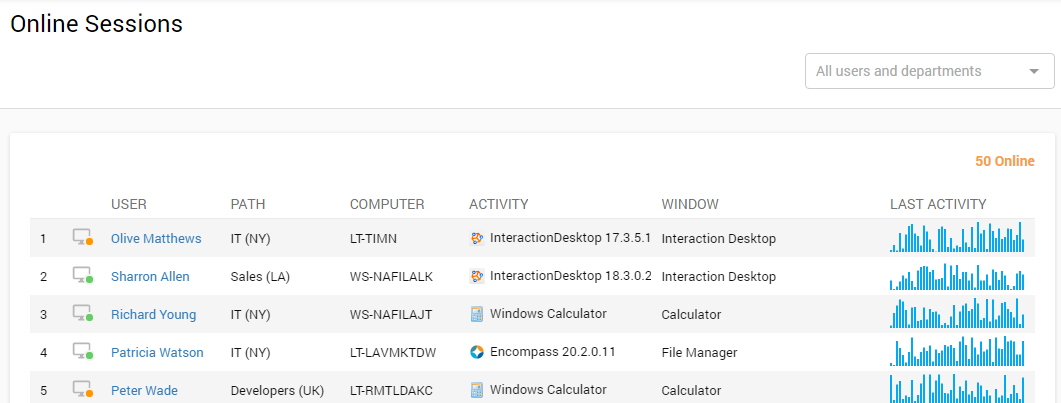
Clear presentation
Good information is easy to understand and use. Controlio meets both requirements by visualizing multiple data through charts and providing reports in different formats.

Key Takeaways
Data interpretation and information analysis require some skill and effort, but you can make the task way easier if choosing the right tool to collect job performance data. By automating a part of the process, you will be able to focus on crafting the best strategies for boosting your workforce performance.
Article Photo © Radoslav Minchev | Flickr
Share a post
Start to monitor employees instantly!
Install our solutions all over your network within 5 minutes